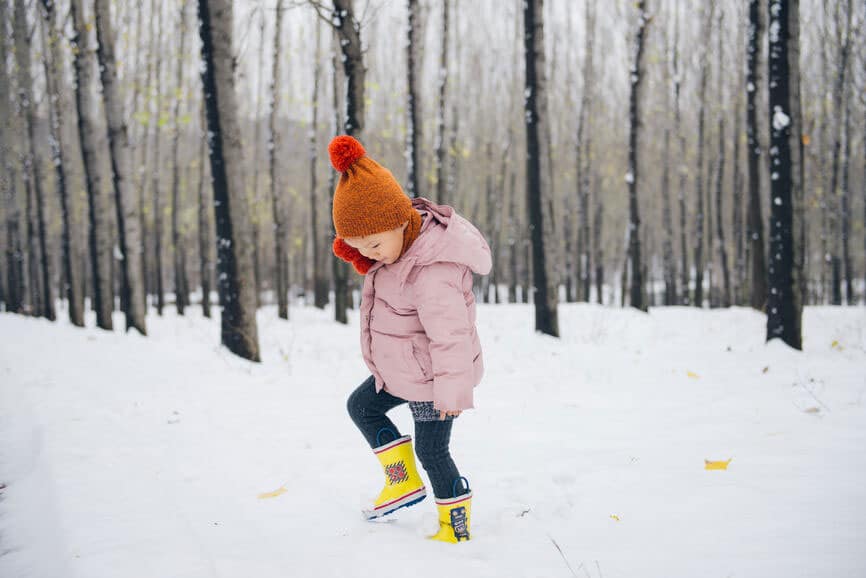Winter is coming. Turns out, that’s not just a clever tagline for a TV show. It’s also a fact to keep in mind if you’re a homeowner. Winter – the shift to below-freezing temperatures, the icy precipitation, the wind, even the falling leaves gathering in your gutters – can wreak havoc on a house.
To help you prepare, we spoke with Shane R. Duffy, co-owner of SD Squared, a home renovation and design firm in New York City. He gave us 10 tips for winterizing your home, along with one key piece of advice: “Make sure the outside of your home is ready for the cold, harsh weather by preparing now.”
So don’t delay. Read these tips and tackle these tasks. Oh, and maybe rotate your heavy sweaters to the front of the closet.
1. Get the right tools
Unless you plan to winterize your home with your bare hands, you’ll need the right equipment to keep your domain safe and sound. Start with a quality snow blower and some shovels to remove snow and ice from your driveway, sidewalk, deck and yard. You’ll also want to buy snow brushes and ice scrapers.
2. Clean out your gutters
“When it snows, roofs and gutters get hit hard,” Duffy says. “As ice builds up in the gutters, ice dams accumulate and lead to damage. Having gutters clear of debris will allow any melted snow or excess rain flow off your roof into drainage, rather than onto your house or into your foundation.”
Start by removing any accumulated leaves, sticks or other debris so the gutters are unobstructed. Then, to prime them for taking on snow and ice, get an electric roof cable. (This is similar to a cable you’d use indoors for pipes.) This will fasten between shingles and can sense the temperature to prevent ice from forming and keep downspouts flowing. If your gutters do freeze, Duffy recommends filling an old pair of panty hose with calcium chloride and laying them on any ice dams that have formed. This will save you the effort and risk of breaking up ice with an ice pick on your frozen roof. You’re welcome.
3. Sealants. Get them. Use them. Love them.
“Protect surfaces against harsh weather and moisture with sealants to repel ice, rain and snow indoors and out,” Duffy says. “You can use a sealant on a variety of surfaces to protect walkways, wood and outdoor surfaces before the weather arrives.” Your goal here is to prevent damage from the inevitable damage that cold precipitation can bring.
4. Put away or cover outdoor fixtures
“This ensures they stay intact for the next season,” Duffy says. He mentions outdoor faucets as an example. Winter temperatures can freeze and expand the water inside your pipes, which can then burst and cause serious (and expensive) damage. You can get an insulated cover for less than $20. (An ounce of prevention and all that.)
5. Seal windows with weather stripping
“According to the Department of Energy, the average home has enough air leakage to add up to a two-foot square hole,” Duffy notes. “That’s like leaving a medium-sized window open in a home 24 hours a day.” Cut down on energy costs by sealing your doors and windows with weather-strip tape, which can stop air leaks. You can also use a door sweep to keep out cold air and dust.
6. Insulate pipes that might freeze
Remember what we said a moment ago about pipes bursting and the damage that can cause? Well, another thing to do to prevent that is to insulate your pipes. “Insulation helps keep the heat in to maximize energy savings and prepare for those colder days and nights,” Duffy says. “It’s also important to maintain water temperatures in your pipes to prevent them from freezing.”
Why life insurance
Life insurance is a financial safety net for your partner, your kids, your life...
Read more7. Keep your water heater warm
“Water heaters are the second biggest user of energy behind space heating,” Duffy says. “Insulating your water heater with an insulated blanket can help keep the hot water being stored hotter and save up to 9% on your water heating costs.”
Also, you can save money by installing a hot water recirculating system, which circulates water at designated times so you can get hot water out of the faucet faster. “Not only is that great on a cold morning, it also saves on costs because you don’t have to waste cold water down the drain,” Duffy says.
8. Check your heater before it gets cold
This might seem like a no-brainer, and yet it’s easy to forget. You’ll need a working heater during the winter, so double-check that yours is functioning before it becomes necessary. Have a licensed, authorized heating and cooling professional inspect it for extra peace-of-mind (and help with any repairs). “It always adds a layer of comfort for homeowners knowing that someone has checked out their equipment,” Duffy notes.
9. Use a filter for your furnace
A good filter will reduce the dust and dirt in your air (and, therefore, your lungs). “Inexpensive fiberglass filters can be as low as 99 cents,” Duffy says. “They will trap 30% to 40% of the dust and dirt. Electric static filters will trap 85% to 90%.” Whichever you choose, note how often they need to be replaced — some require you to change them monthly.
10. Plan ahead for a power outage
All it takes is a little ice. That ice lands on a tree branch, weighs down the branch, and that branch falls on a power line.The next thing you know, your neighborhood goes dark. If and when that happens, you’ll want to be prepared.
Ideally, you’ve already stocked up on necessities, such as flashlights, extra batteries, nonperishable food, bottled water and a first aid kit. (If not, now is as good a time as ever.) For winter specifically, you’ll want to add sources of heat such as a kerosene heater, which can be used indoors. (These sources of heat do carry an added element of risk, so make sure carbon monoxide and smoke detectors are installed and functioning.) Another option? “Consider purchasing a generator,” Duffy says, “for assurance that you will have a solid back-up option should the power go out for an extended period of time.”
Louis Wilson is a freelance writer whose work has appeared in a wide array of publications, both online and in print. He often writes about travel, sports, popular culture, men’s fashion and grooming, and more. He lives in Austin, Texas, where he has developed an unbridled passion for breakfast tacos, with his wife and two children. This article is sponsored by Haven Life Insurance Agency. Opinions are his own.







